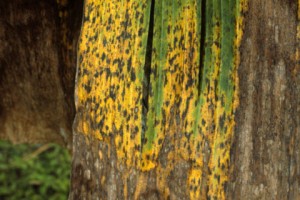Recently, our friend Eve mentioned in an offhand way that the banana as we know it is dying out. In addition to a wave of banana grief that washed over me, I also felt a small measure of relief; this was one of those news stories that I had heard a few years ago but from which I retained almost none of the scientific detail, and I had begun to think that I dreamed it. But no! The banana horror story is real, and I have collected some of its finer points here.
The tragic end of the banana was built into its genes from almost the very beginning, or at least its lucrative economic beginning. In a quest to get more uniform, shippable and still edible fruit, the banana plant was made into a seedless version of its formerly wild self. That means that they are sterile and have to be grafted onto stems by human hands in order to survive. And the variety of bananas was drastically reduced as tropical nations made room for whole plantations of the anointed breed favored by the banana companies, called the Gros Michel.
But raising an army of sterile mutants has its drawbacks. For instance, they can’t naturally evolve to ward off disease, which is exactly what happened to the Gros Michel in the 1960s when it was wiped out by a fungus called Panama disease. This, of course, sent banana scions scurrying for a replacement, and they found a lesser but viable alternative in the Cavendish banana, the variety that currently graces your supermarket shelves. But—egad!—banana lightning does strike twice, and now the Cavendish is being ravaged by a fungus called Black Sigatoka (I am not making these names up, I swear). No adequate fungicide has been found. The prognosis for the Cavendish is bleak. Continue reading

